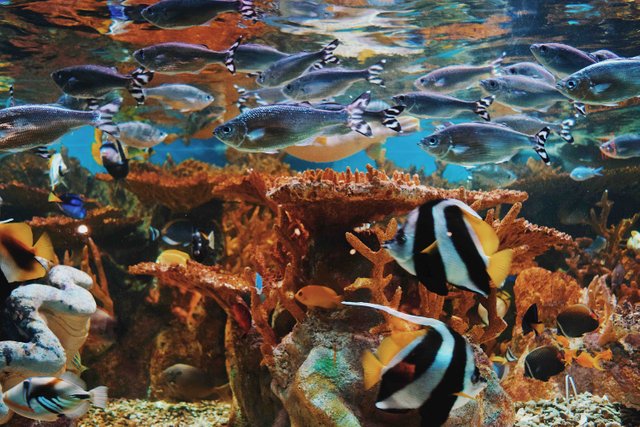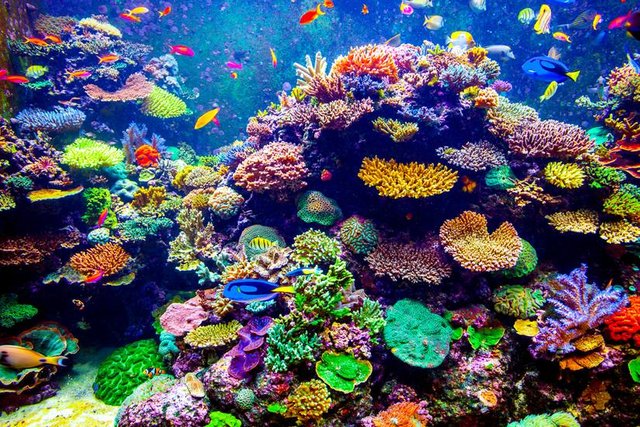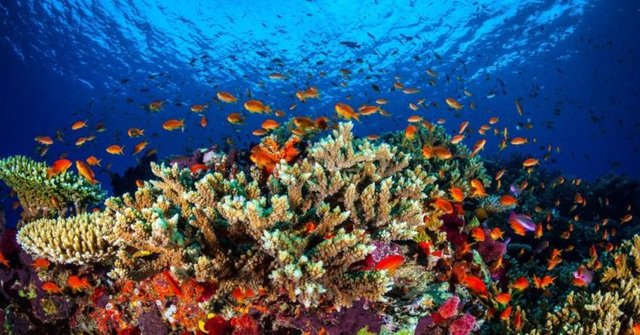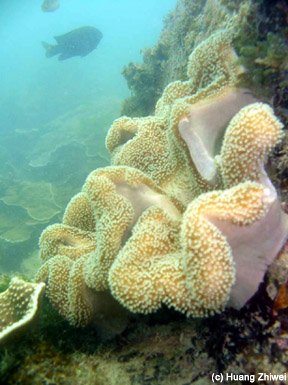International Year of the Reef (IYOR). 3rd Observance in 2018!

The International Year of the Reef (IYOR) is celebrated for a year, every 10 years. The 3rd edition of the IYOR is being celebrated in 2018 in tribute to the wonders of the reefs found all over our planet. The celebration encourages the following:
Strengthen awareness of the wonders, the value and the fragility of coral reefs and their interdependent ecosystems.
Promote partnerships to effectively manage reef systems between various organisations: governments, private sector, academic institutions and society at large.
Identify and promote best practices to ensure the continued preservation of fragile coral reef systems by adopting effective management strategies, their sustainable use and ensuring increased resiliency.
Engage all stakeholders in these objectives by sharing information on sustainable coral reef management
What are Corals?
Corals are invertebrate (simply put - without a spinal column) animals belonging to the phylum, Cnidaria. This is a large group of animals found in freshwater and marine environments; primarily marine species. The distinguishing characteristics of corals are the simple stomach with a single mouth opening and surrounded by stinging tentacles. Corals tend to exhibit a wide variety of colours, shapes and sizes. Corals are also commonly distinguished as either 'hard' or 'soft' corals. Hard corals are the reef builders; while soft corals lack the calcium-based skeleton to contribute to reef building.
What are Coral Reefs?
Coral reefs are formed when hard corals extract significant amounts of calcium from the surrounding seawater to build the hard structure to support the development of corals of various forms and often provide protection to many other marine life. Coral reefs have evolved over the last 200 to 300 million years. They are usually part of extended ecosystems that can include mangrove swamps and seagrass meadows. Coral reefs can be found all over the planet - in deep cold water oceans to shallow tropical waters.
There are 3 main types of coral reefs as originally described by Charles Darwin:
1. Atolls
Atolls are large, ring-shaped reefs with a lagoon in the middle and found off the coast. Atolls develop near the sea surface on underwater islands or on islands that sink, or subside. The most common vegetation found on these coral reefs are coconut palms that secure themselves on the sediment build up.
2. Barriers
Barrier reefs are broader and form farther away from the coast. Instead of growing directly out from the shore, they are separated from land by an expanse of water. This creates a lagoon of open, often deep water between the reef and the shore.
3. Fringing
Fringing reefs are the most common form of coral reefs. This type of reef grows seaward directly from the shore. They form borders along the shoreline and surrounding islands. They are fairly shallow, narrow and recently formed.
Singapore's Coral Reefs
Singapore, situated at 1 degree north of the Equator, lies in one of the most biodiverse environments. Although economic development has greatly reduced the size of some of the ecosystems, the tropical island of Singapore still sustains all three of the ecosystems the IYOR aims to protect: mangroves, seagrass and, most importantly, coral reefs.
Nature lovers in Singapore are grateful for the measures that have been taken to protect our coral reefs and their interdependent ecosystems. If you are keen, you can view a variety of drone pictures and videos taken by a nature enthusiast, who has documented a selection of the 64 islands and various reefs that fringe the country's shore, here.
The next time you are close to a coral reef, snorkelling or scuba diving over one, take care to protect these fragile ecosystems so that future generations can also appreciate them. Coral reefs take a very long time to establish and grow in size. They already suffer significantly from the effects of warming oceans and seas and in particular from human abuse. Let us work together to preserve the sanctity of these life forms so that we can continue to appreciate their beauty.
Top Image Credit: Photo by Naomi Tamar on Unsplash
References:



Awesome! I was diving in Singapore ealier this year, and my ccolleagues observed coral spawning here in March. Check out my coral spawning post if you're interested
https://steemit.com/nature/@swell4h/coral-reef-spawning-event-or-written-by-a-marine-biologist#comments
Diving in Singapore waters can be challenging due to the lower visibility. This is caused by heavy traffic of naval craft of all sizes. About 2 years ago, my wife and I dived around Pulau Hantu. Visibility was poor and there were strong currents. We did not particularly enjoy that dive; but we had a great time with our fellow divers. We haven't returned to dive around Pulau Hantu recently. Singapore is taking additional steps to establish a marine sanctuary for the benefit of all divers around the Sisters' Islands. I hope you get a chance to return to Singapore to dive in the future.
PS: I checked out your comprehensive post on coral spawning. Enjoyed reading it. The accompanying photos were also great! Upvoted it.
Nice post @acdevan
Thank you! @nyakti
@originalworks
The @OriginalWorks bot has determined this post by @acdevan to be original material and upvoted it!
To call @OriginalWorks, simply reply to any post with @originalworks or !originalworks in your message!